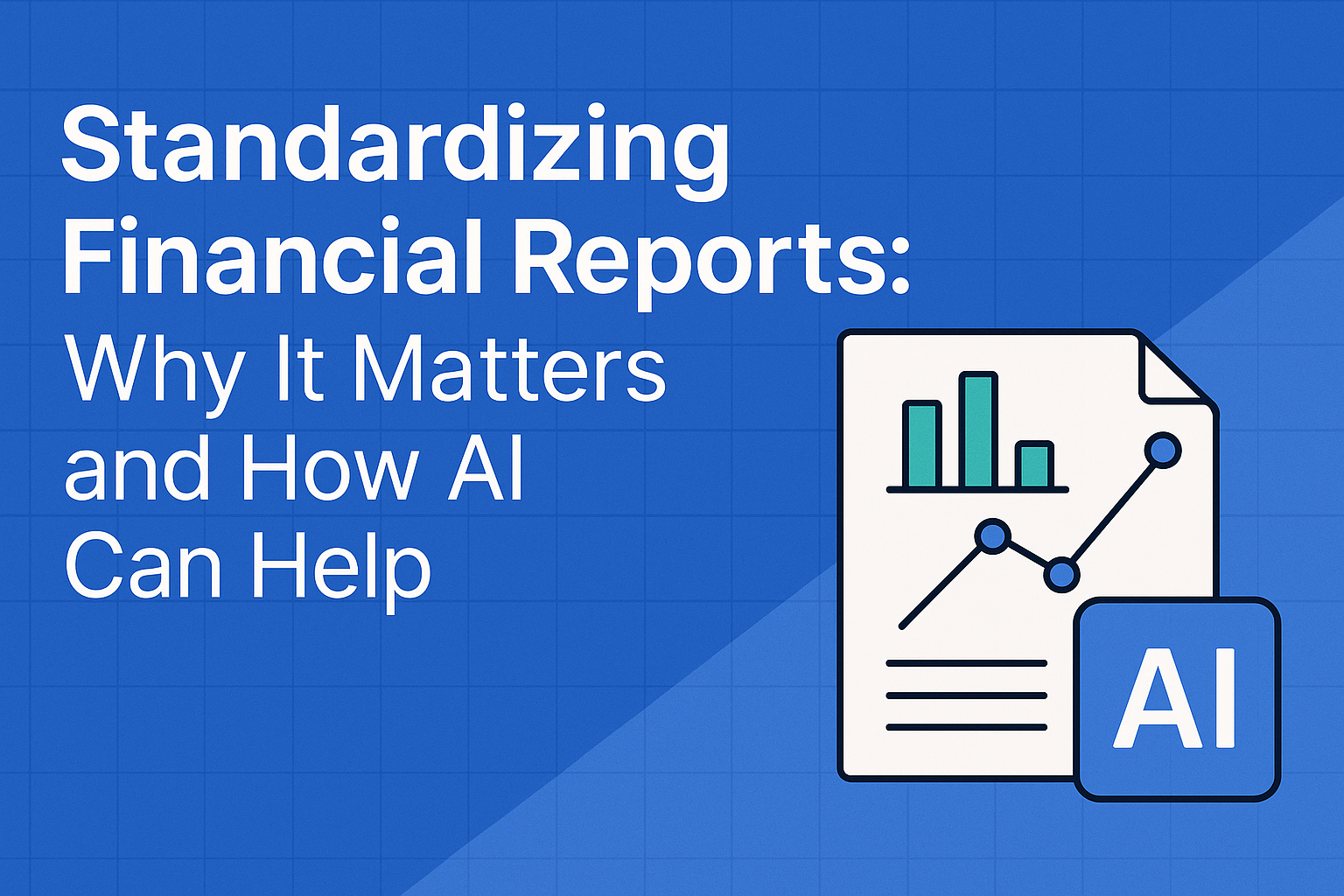Standardizing Financial Reports: Why It Matters and How AI Can Help
Igor Strelkov
Published on July 8, 2025

When I first started analyzing financial statements, no two reports ever looked the same. Some had expenses grouped under strange headers. Others broke out operating income but hid depreciation in footnotes. One report called it "Net Profit," another called it "Bottom Line." And don’t get me started on the date formats.
It wasn’t just annoying. It was risky.
Standardization isn’t a nice-to-have in finance. It’s mission-critical. Whether you're building models, issuing credit, making investment decisions, or reporting across entities, having consistent financial data is essential.
In this post, I’ll break down why standardizing financial reports matters so much—and how AI tools like Assess Finance are solving the problem.
Why Standardization Matters
1. Comparability
If Company A reports "EBITDA" and Company B reports "Operating Profit Before Tax," how do you compare them? You can’t—unless someone standardizes the formats.
Standardization ensures apples-to-apples comparisons across:
- Different companies
- Multiple time periods
- Geographic markets
2. Accuracy in Modeling
Even the best spreadsheet in the world will break if your inputs are inconsistent. Non-standard reports lead to:
- Broken formulas
- Misleading ratios
- Incorrect forecasts
3. Faster Decision-Making
When data is clean and consistent, you can:
- Automate workflows
- Run dashboards in real-time
- Trust your KPIs and trends
Time spent deciphering inconsistent reports = time not spent analyzing.
4. Regulatory and Audit Readiness
If you're ever preparing for an audit or submitting financials to a bank or regulator, standardized reports reduce friction, red flags, and revisions.
Why It’s So Hard to Standardize Manually
Here’s what I used to do:
Copy data from a PDF financial report
Paste it into Excel
Rename rows
Check for duplicate line items
Fix total mismatches
Repeat for every statement
Now multiply that by 10 companies or 10 years.
The problem? Everyone reports differently. Even within the same organization, format inconsistencies are common. Manual cleanup is slow, error-prone, and not scalable.
How AI Can Help
Modern AI tools use a combination of OCR, NLP, and rule-based mapping to:
- Detect line items (even with different labels)
- Group financial data under standard headers
- Normalize formats (dates, currencies, categories)
- Output consistent, structured reports
What Assess Finance Does:
- Parses both native and scanned PDFs
- Detects income statements, balance sheets, and cash flows
- Maps rows into GAAP/IFRS-style formats
- Exports clean Excel or CSV reports
I built Assess Finance because I was tired of cleaning financial data for hours. Now, it takes seconds.
Final Thoughts
Standardizing financial reports isn’t optional if you care about accuracy, scalability, or decision-making.
AI can help get you there faster—with less human error, more consistency, and a lot less copy-pasting.
Ready to see it in action? Try Assess Finance and upload a PDF. Watch it return a standardized income statement and balance sheet in seconds.
Your future self (and your spreadsheets) will thank you.